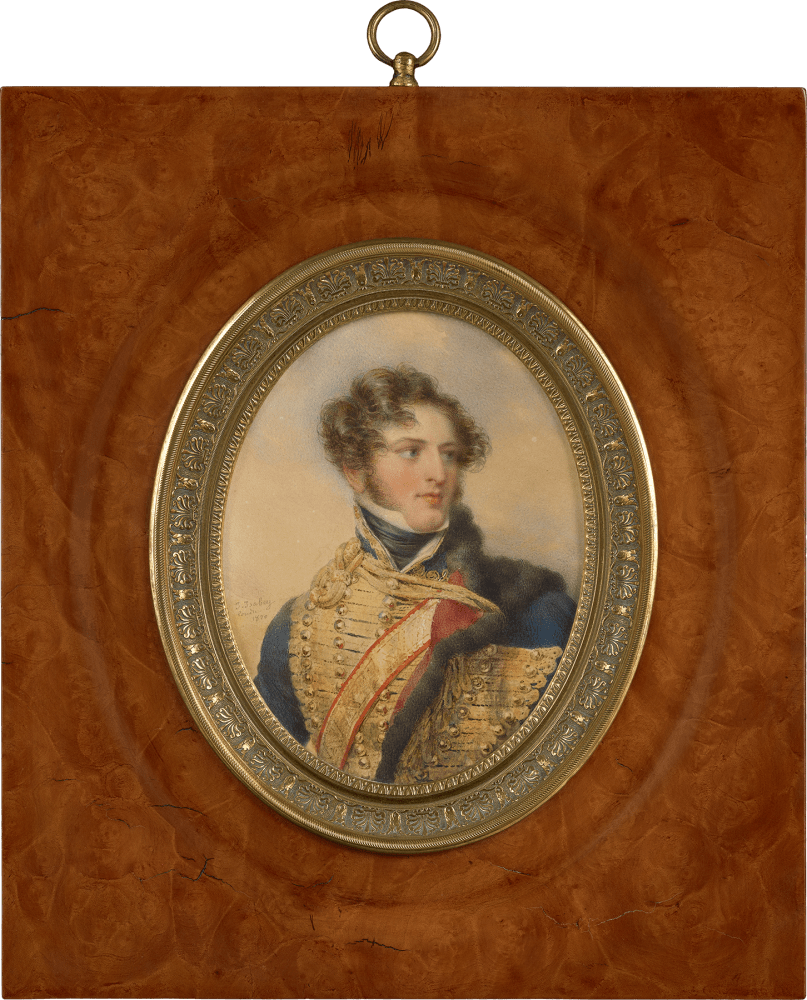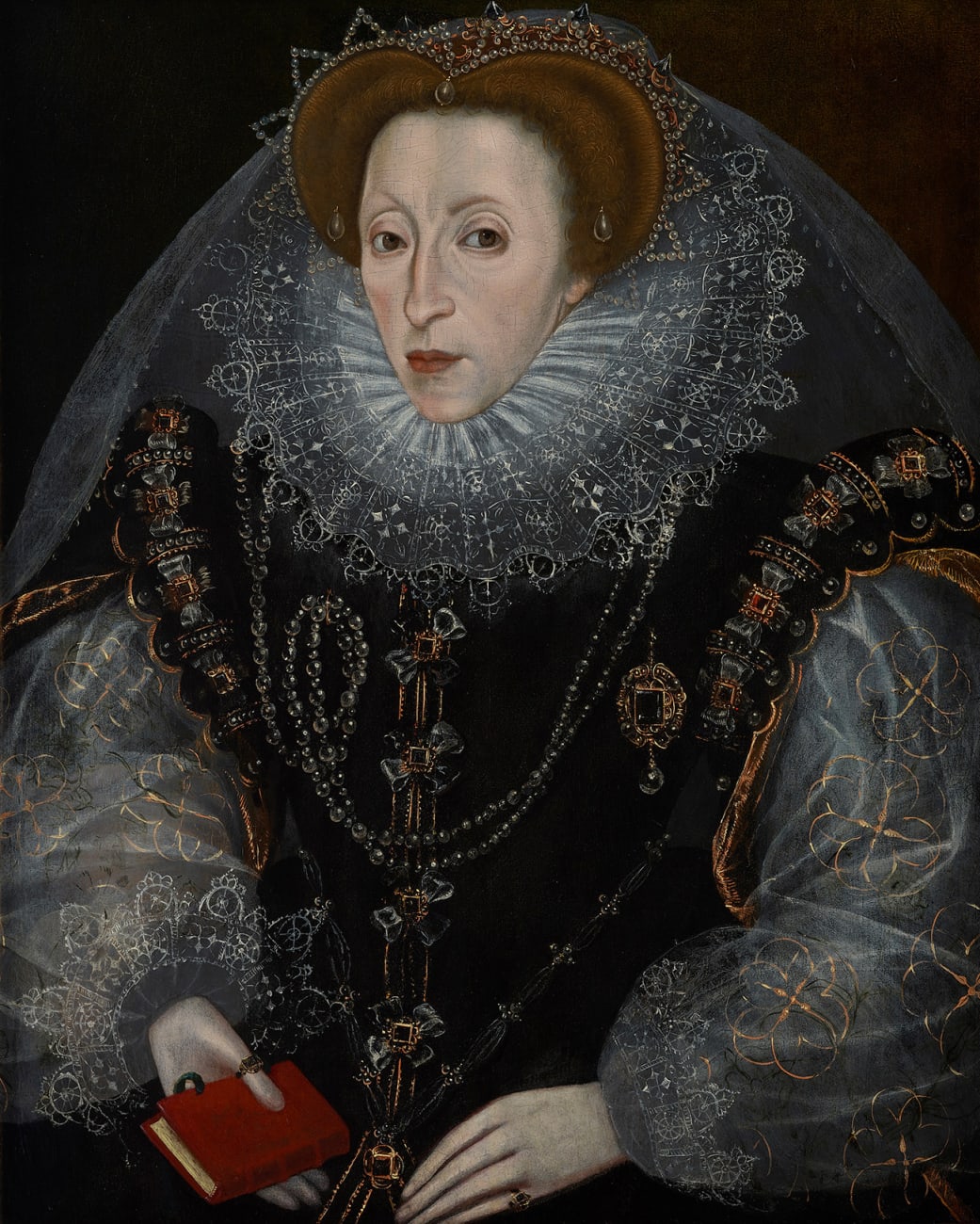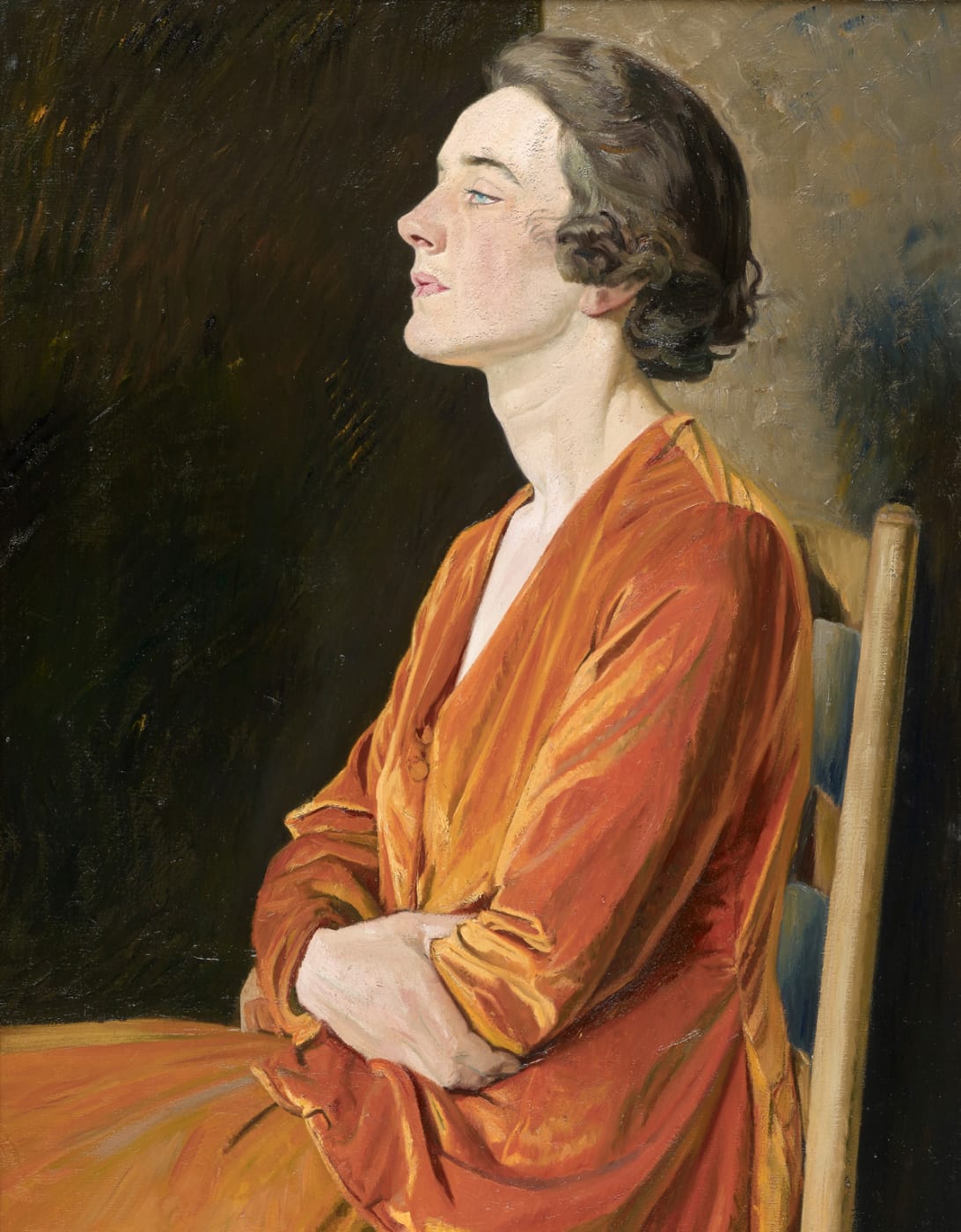
By coincidence, Philip Mould & Co. are able to offer two exceptional portraits by the remarkable French portraitist Jean-Baptiste Isabey (fig. 1). Separated by a matter of years, both portraits are similar in size, condition and execution, but the men portrayed led very different lives and represent quite distinctive phases in Isabey's personal life and career.
In common with the pragmatic approach of many portraitists, Isabey remained politically neutral throughout his career. Never was this neutrality tested more than in Europe during the late 18th and early 19th century, particularly in Isabey's native France. Born in Nancy, Isabey began his working life quietly - the son of a schoolteacher, he set up a shop selling small fancy goods. His natural ability led to lessons from a local landscape painter and then, when his brother Louis (a musical prodigy) left for the bright lights of Paris, Jean-Baptiste followed him. He was eighteen years old.
Isabey was first introduced to Francois Dumont, painter to Marie Antoinette, who refused to help him, but luck combined with Isabey's amiable personality, led him to his first commission - to paint the Queen's young nephews. After seeing the exceptionally sensitive portraits of the boys, Isabey was invited to Versailles, where he became established as artist to the extraordinary court of Marie Antoinette.
As the French Revolution began, Isabey found that, as an artist, he was dangerously close to the royal family and nobility. Again, with a combination of talent and charm, he was lucky enough to be taken in by Jacques-Louis David, the revolutionary neo-classicist artist. He painted few miniatures at this time but made friends with the influential diplomat Charles Maurice de Talleyrand-Périgord. Eventually, he took a position as a drawing master where, by chance, he met the children of Josephine de Beauharnais, who of course married a Corsican soldier by the name of Napoleon Buonaparte (fig. 2). Soon after this auspicious meeting, Isabey became one of the principal painters of Napoleon's regime, and the confidant of his first wife.
This first portrait, dated 1813, does in fact portray one of the men responsible for Napoleon's downfall. Depicting the Russian General of Cavalry, Fedor Petrovich Uvarov (1769-1824), Isabey shows the determined features of the distinguished soldier who played a decisive role against the French at the Battle of Borodino (fig. 3). Shortly after this portrait was completed (along with a portrait of Apraskin, adjutant to Count Uvarov in 1814) the Congress of Vienna convened. Following Napoleon's abdication, European heads of State met to discuss the new national borders. Here, Isabey painted many individual portraits, including that of the Duke of Wellington and Talleyrand, as well as a large watercolour now in the Royal Collection (fig.4).
In the spring of 1820, Isabey, now an internationally renowned artist famous throughout Europe, visited London. It was the Duke of Wellington, the great nemesis of Napoleon, who introduced the artist to the noble families of England. Wellington recommended him to the Seymour family, including Frederick Charles William Seymour (1797-1856), whom he painted wearing the uniform of the 7th Regiment of the Light Dragoons (Hussars) (fig. 5). Shown in the guise of romantic military hero, Frederick Seymour in fact appears to have had an unremarkable career, unlike that of his brother Horace (also painted by Isabey) who was described as 'the strongest man in the British army'. It is nevertheless an extraordinary portrait, communicating the virile energy of the sitter in delicate watercolour hues.
Although these two watercolours represent a very short period in Isabey's long career, they also highlight his versatility as an artist and the delicate diplomatic role required from portraitists during one of Europe's most troubled times.







